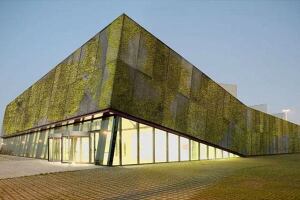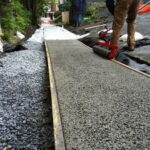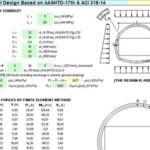
What is Bio-Concrete? Advantages and applications
26 May 2024Table of Contents
What is Bio-Concrete? Advantages and applications
What is Bio-Concrete?
Bio-concrete, also known as self-healing concrete, is an innovative material designed to repair its own cracks and damages autonomously, extending the lifespan of concrete structures. The primary mechanism behind bio-concrete involves the incorporation of bacteria and nutrients within the concrete mix. These bacteria, when activated by the presence of water entering through cracks, produce limestone (calcium carbonate), which fills and seals the cracks.
How Bio-Concrete Works
- Bacteria Incorporation: Specific types of bacteria (e.g., Bacillus species) are added to the concrete mix. These bacteria can survive in the harsh environment of concrete by forming spores that remain dormant until activated.
- Nutrient Addition: A nutrient source, usually a form of calcium lactate, is mixed into the concrete. This serves as food for the bacteria when they become active.
- Activation and Healing Process:
- When cracks form and water penetrates the concrete, the dormant bacterial spores are activated.
- The bacteria consume the calcium lactate and convert it into calcium carbonate (limestone).
- The produced limestone fills the cracks and hardens, effectively sealing the gaps and preventing further ingress of water or harmful substances.
Applications of Bio-Concrete
- Infrastructure: Used in the construction and maintenance of bridges, highways, tunnels, and other critical infrastructure where durability and longevity are paramount.
- Buildings: Applied in residential, commercial, and industrial buildings to enhance the lifespan of structural components such as walls, floors, and foundations.
- Marine Structures: Ideal for structures exposed to water and harsh marine environments, such as piers, docks, and seawalls, where it helps to combat the detrimental effects of constant moisture and salt.
- Historical Preservation: Used in the restoration and preservation of historical buildings and monuments, where maintaining the original structure without frequent repairs is essential.
Advantages of Bio-Concrete
- Extended Lifespan: Reduces the need for frequent repairs and maintenance, thereby extending the lifespan of concrete structures.
- Cost-Effective: Although initially more expensive, the reduction in repair and maintenance costs over time can make bio-concrete a cost-effective solution.
- Environmental Benefits: Decreases the environmental impact associated with concrete production and repairs by reducing the need for new concrete and repair materials.
- Improved Durability: Enhances the overall durability and resilience of concrete structures, making them more resistant to cracking and damage.
Implementation in Construction
- Mix Design: Bio-concrete requires a specialized mix design incorporating the bacterial spores and nutrients. The mix must ensure that these components remain viable until activation.
- Quality Control: Careful quality control is necessary during the mixing and pouring processes to ensure the bacteria and nutrients are evenly distributed and remain effective.
- Standard Construction Methods: Bio-concrete can be used with standard construction methods, making it easy to integrate into existing building practices without the need for specialized equipment or techniques.
Bio-concrete represents a significant advancement in construction materials, offering a smart solution to one of the most persistent problems in concrete structures: cracking and deterioration. By leveraging biological processes, bio-concrete not only enhances structural integrity but also promotes sustainability in the construction industry.








